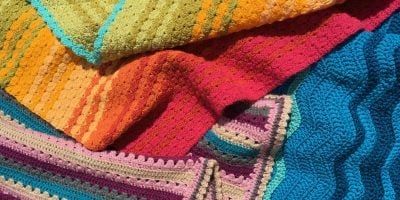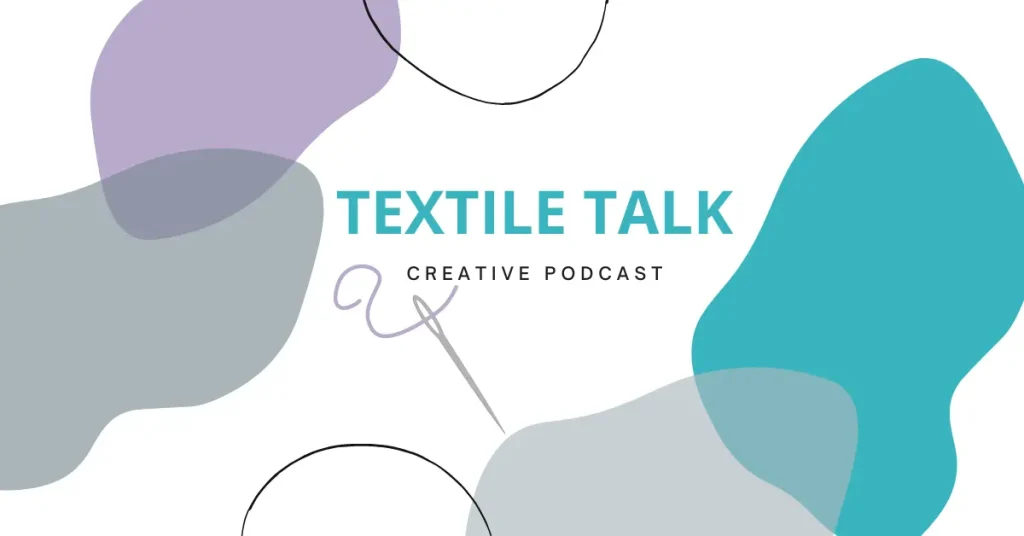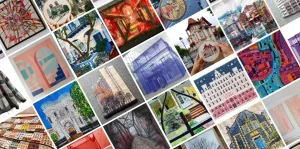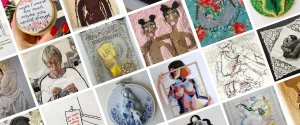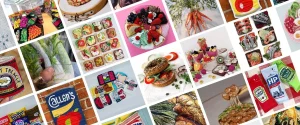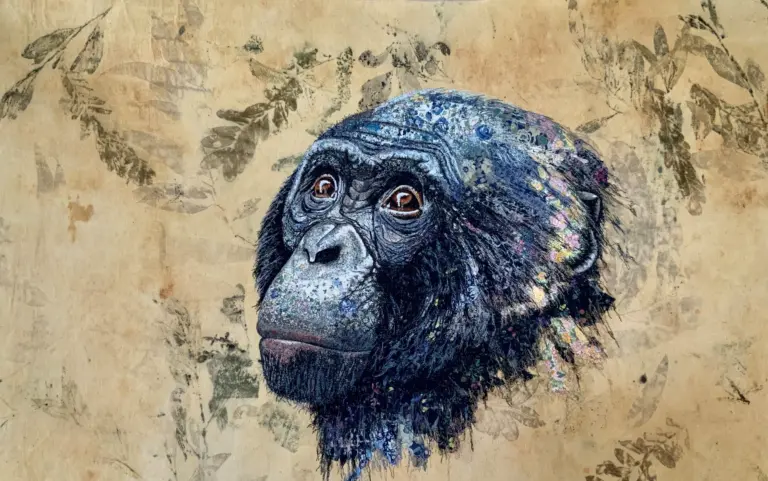Karen Nicol is a celebrated London-based textile artist whose artistry spans the worlds of fashion, interiors, and fine art. With over fifty years in the industry, Karen has established herself as a pioneer in embroidery and mixed media, blending both modern and traditional techniques.
Using an array of embellishment techniques specialising in the Irish machine, Karen’s creations reflect a unique versatility that has earned her collaborations with many fashion icons. Her work has graced everything from royal interiors to gallery walls and high-fashion runways, securing her a rare and prestigious Royal Designer for Industry accolade.
Karen shares her journey from a family of embroiderers to becoming a renowned textile artist. She delves into her creative process, revealing the fascinating tools and materials—from vintage flea market finds to customised threads—that bring her intricate designs to life. Readers will learn about the hand governed Irish machine that Karen uses on to add texture and fluidity to her pieces and discover her approach to sourcing inspiration from everyday objects, museum visits, and her vibrant studio collection.
Karen Nicol

“Be open to expand your own ideas and keep moving into new things. This often happens when you take on challenges such as collaborating with people like fashion designers or interior designers. You discover new sides of your capabilities whilst trying to fulfil their impossible demands.
I think you must keep at it and take the rough with the smooth, take risks and keep trying.”
How did your journey into textiles begin?
My mother and sister were both embroiderers. My mother was self-taught and stitched, painted, did millinery, demonstrated flower arranging and was a master in Ikebana. My sister did a BA degree in embroidery at MMU and is now a wonderful painter. We were taught all the basics of stitch and dressmaking by my mother. When I was fourteen, she made my sister and I a personal dress pattern block each and said she would buy us any fabric at the market but no more clothes. At that age the freedom was wonderful, we had no fear. I would happily walk out in wild dresses held together with bits of stitching, staples and tape.
When I left school I got onto Manchester Art College foundation, I wanted to do something with more street cred than I thought textiles had at that time. I aimed to be a fine artist, painter or sculptor but eventually when we did the textiles project I just couldn’t ignore the versatility and diversity of textiles as a medium. I just loved it. Following a BA(Hons) in Embroidery I then got into the Royal College of Art to do an MA(RCA). They didn’t have an embroidery course, so I did knit and embroidered on it.
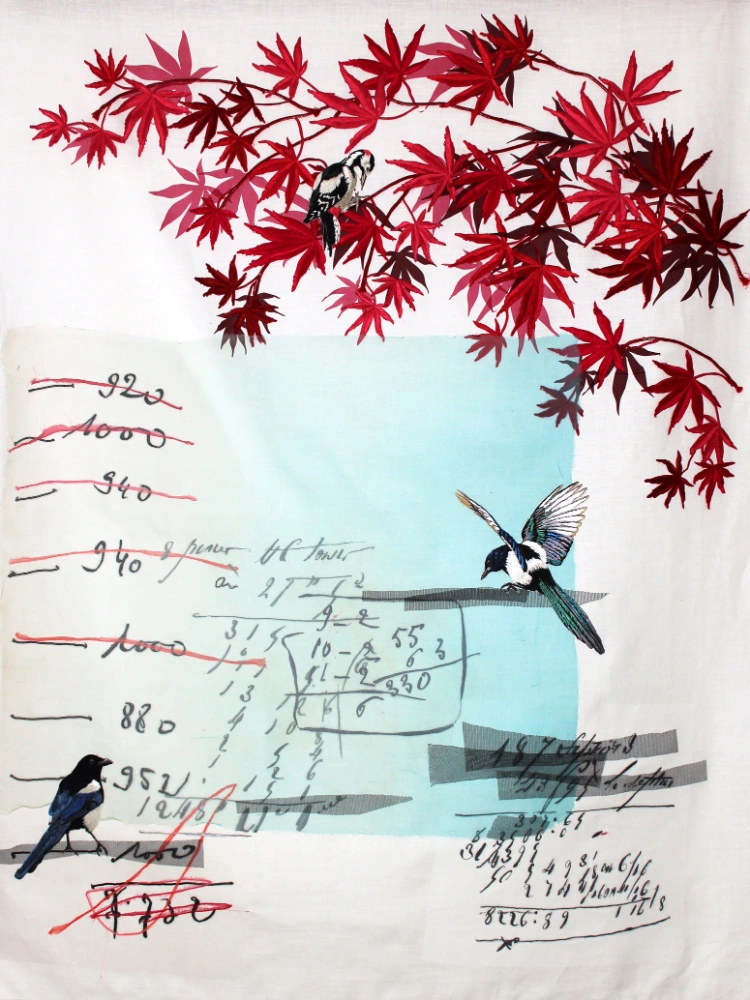
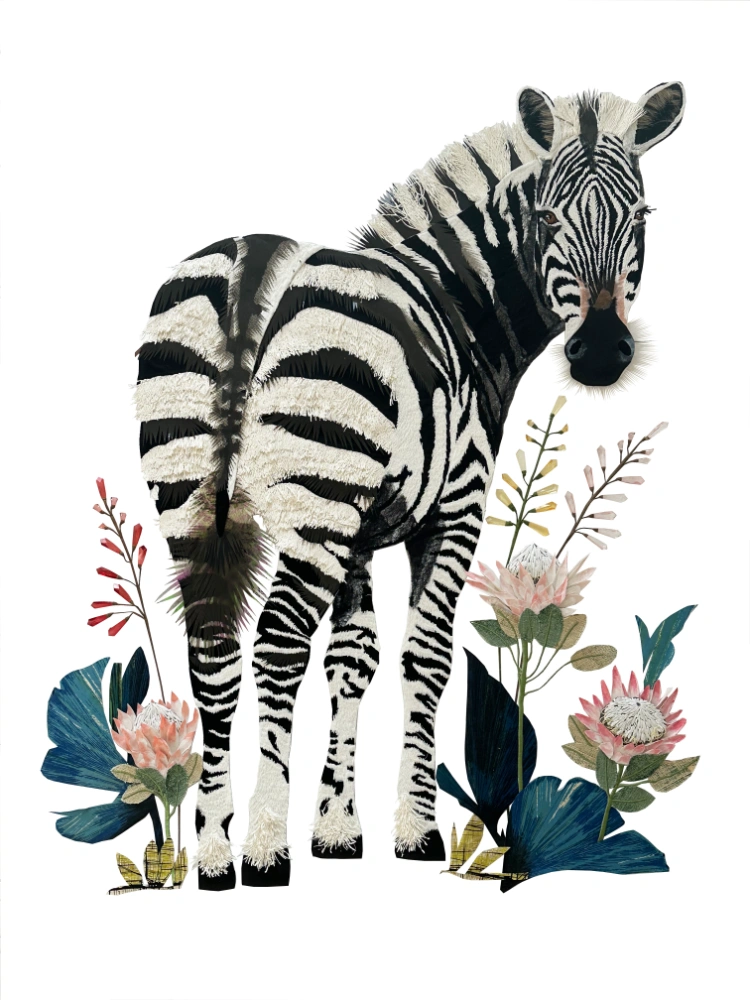
Career Progression
When I left I was determined to make my living by embroidery. I had created an embroidered knit fashion collection for my degree so with the courage of youth I went to Paris with my portfolio and went into boutiques I liked the look of and showed them my work. One shop bought a few pieces, I had my contact details on the label and later I got a phone call from Uta Raasch, a fashion designer from Dusseldorf who had seen it. She flew over to meet me and I worked freelance with her in Germany for the next ten years. A wonderful opportunity to learn about the fashion industry and build up my knowledge, contacts and confidence.
For many years I taught a couple of days a week at different art colleges, I loved it and it gave me a financial security alongside my freelance work. I then was asked to set up the embroidery course at the Royal College of Art calling it Mixed Media to allow a freedom of materials and technology. I was senior lecturer there part time for years but always my embroidery business was my main occupation.
I’ve had an amazing career with it all, working in fashion with top designers, in Interiors creating for the likes of kings and popes, in film and TV and in art selling across the world in galleries and art fairs. In 2015 I was made a Royal Designer for Industry alongside designers in all other fields, one of only 200 in the world which was an amazing accolade.
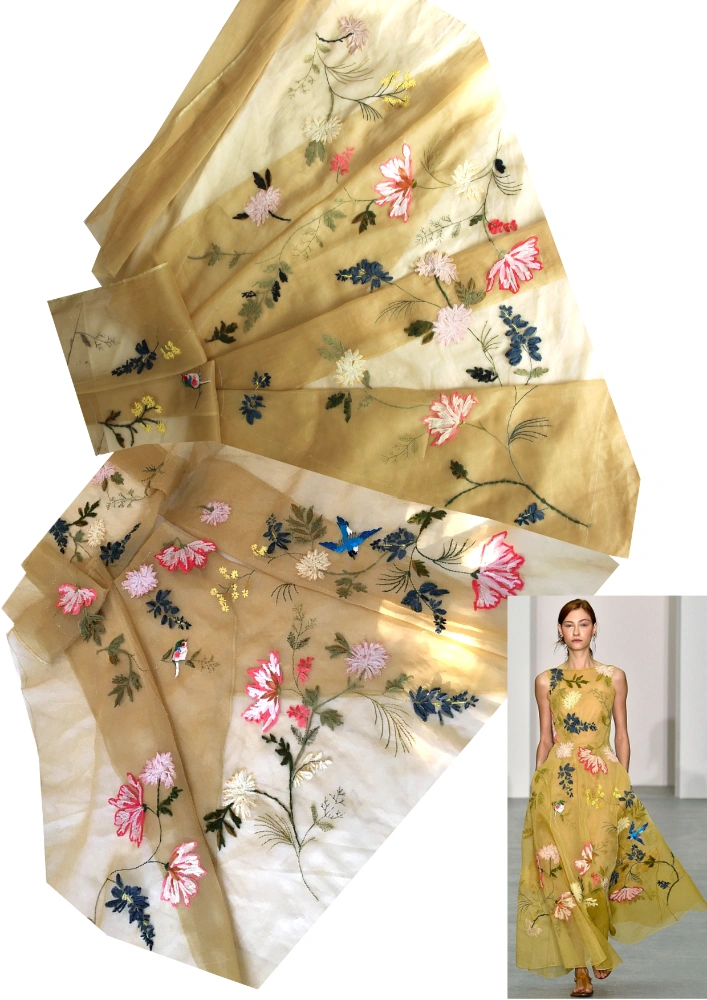
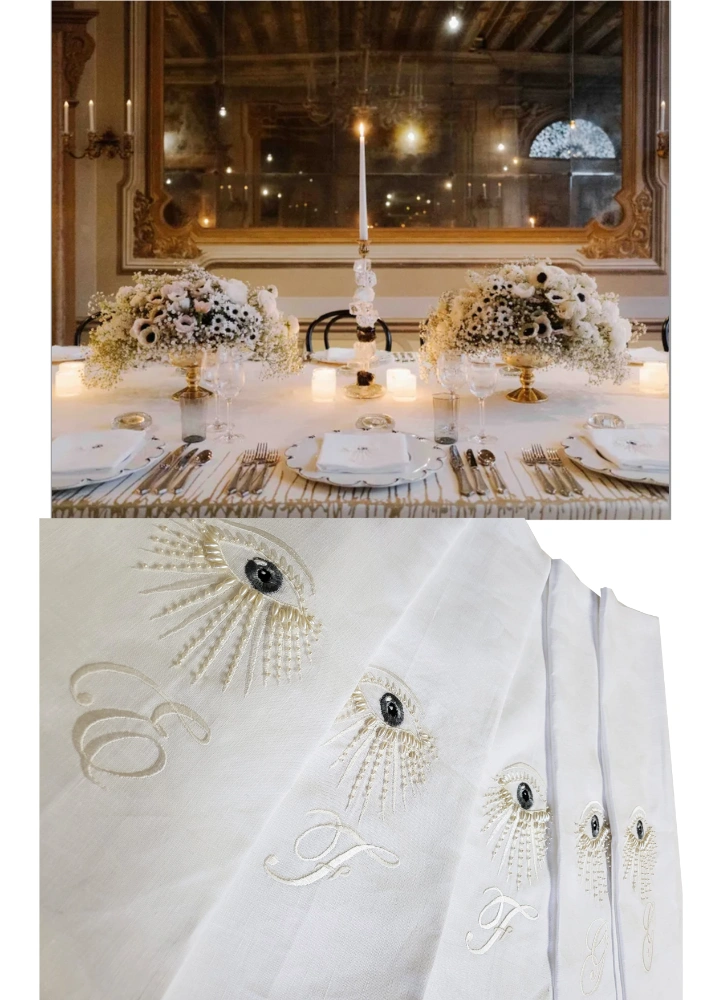

Can you tell us about the type of techniques you use – the machines, threads and fabrics and the processes please?
I try to use any techniques and materials which create the marks and qualities I require to express what is inspiring me. When I’m doing visual research the characteristics of the thing that I’m referencing are as important as the shape and so I try to use the techniques, materials and threads that reflect those qualities, for instance if I’m inspired by some plaster work, I will look for threads or materials that are matt, smooth and dry looking. Similarly looking for techniques which will replicate the properties of the inspiration.

Materials
Materials, I use anything and everything. 90% of my materials come from flea markets and car boot sales where I find wonderful things that you couldn’t find in shops…it does mean, however that you have to buy what you like when you see it rather than necessarily what you are working for at the time but it means I have an amazing stock of just about everything !
I love playing with different materials like making sequins from photograph negatives and heat pressed plastic food containers. An Italian yarn that you can melt and sliced up plastic bags.
Techniques
For techniques I have been fortunate to be ‘artist in residence’ at a few art colleges round the country so have had access to some amazing technology which I really love but in the studio, I always come back to my love of the hand eye coordination of hand governed machines and techniques. I love the fact that you can draw your design on the fabric and then, when you start to work you find you change it constantly as you see the colours, textures, shapes and qualities working together.
In the studio I use an Irish, domestic Bernina, princess pleater, heat press and embellisher and then of course hand stitch….and anything else that a piece needs, I paint a lot of my work , use a pyrographer, millinery stiffeners and sculpture mesh.



What drew you to the Irish and what do you feel it adds to your work?
Most of my work involves my ancient Irish machine.
I work on a hand governed industrial ‘Irish Singer’ embroidery machine, mine must be 80 years old ….This machine has no presser foot or feed, so it just has a single free needle totally unprotected. One can draw very freely with it, but one is moving the ‘paper’ rather than the ‘pencil’! …. It has a knee pedal that fluidly moves the needle from a straight stitch to a satin stitch, at its widest about 1 cm.
Your fingers are very near the needle as you turn the fabric under it to achieve the stitches etc., this creates the opportunity to draw on the fabric with an immediacy of a pencil or paintbrush, impossible by any other means and as your fingers are so close to the needle you can also feed in other yarns and fabrics with ease.
The machine provides a unique rich, sensuous mark making tool. At has the freedom of a paintbrush but the versatility of mixed media combining texture, colour and form.


Where do you usually look for inspiration when starting a new piece?
I automatically look for ideas all the time. I carry a notebook and of course a camera on my phone to make a record of anything that catches my eye. It could be something as simple as a garden gate or the shape of the back lights on a car. I’ve developed a need to translate visual stimuli into embroidery techniques as I see them.
I also, of course, love museums and exhibitions which are so inspirational. I have a library of millions of photos and put special ones in an inspiration file. Plus, I collect all sorts of things from the flea markets I go to. My studio is one big changing mood board which makes me very happy.

How much of your current success do you attribute to your training. How much did it add to the artist you are today?
Going to art college allowed me the amazing opportunity to explore and expand my knowledge and ideas. But most importantly it gave me time to try things out, do things that don’t work, make mistakes and learn by them.
It is also wonderful to be working alongside like-minded students who are also searching for their way. It gives you confidence and time to find yourself. I was incredibly fortunate that in those days on my BA, embroidery students were made to learn the traditional techniques of embroidery whatever type of work we wanted to do. Therefore, from Aemilia Ars to trapunto, we had to be able to do it all. I now realise this was a wonderful grounding. Those techniques have been the foundation and vocabulary of my work ever since and I love pushing those techniques to extreme limits and developing new ways with them.
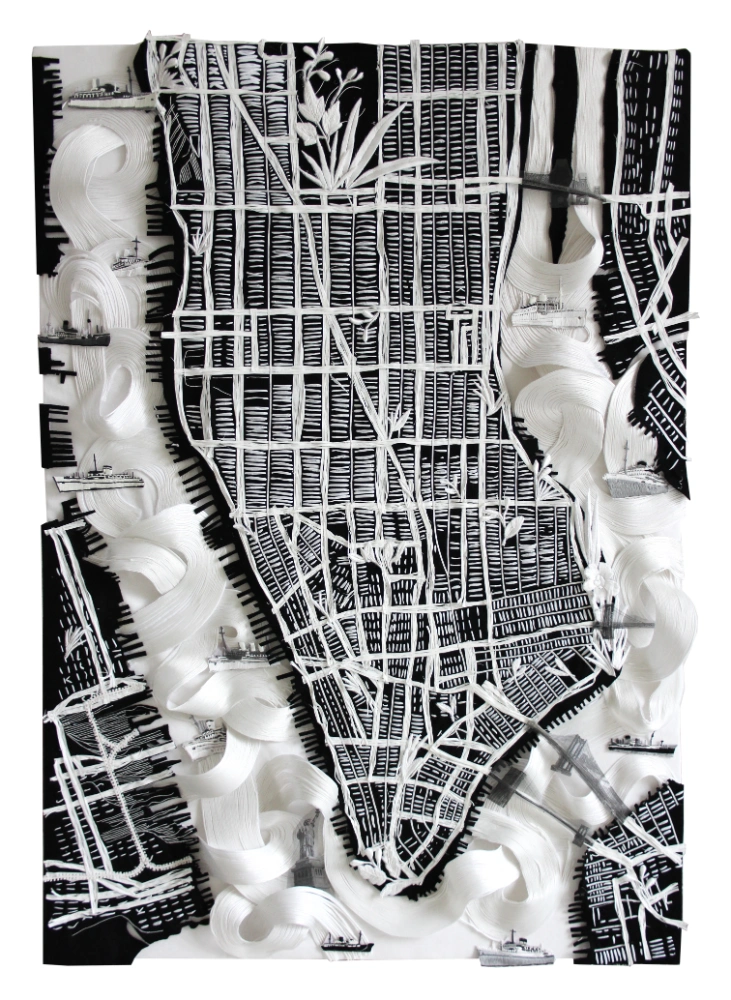
What advice would you give our graduates who might be thinking pursuing a career in textiles?
What has worked well for me is flexibility: Fashion, Interiors, Film and Gallery gives you plenty of avenues to go down. It keeps it interesting and always busy. It can be interesting and enlightening.
Be open to expand your own ideas and keep moving into new things. This often happens when you take on challenges such as collaborating with people like fashion designers or interior designers. You discover new sides of your capabilities whilst trying to fulfil their impossible demands.
I think you must keep at it and take the rough with the smooth, take risks and keep trying.
What do you do if you hit a dry spell regarding inspiration for your work? Any tips or techniques for getting back on track again?
It is never easy when that happens. I always used to say to my students, and often say to myself, you need to constantly feed your creativity with inspiration. So, go out and look for stimulation, round the shops, art fairs, galleries and museums. Go anywhere to find things that you love visually and trigger new thoughts.
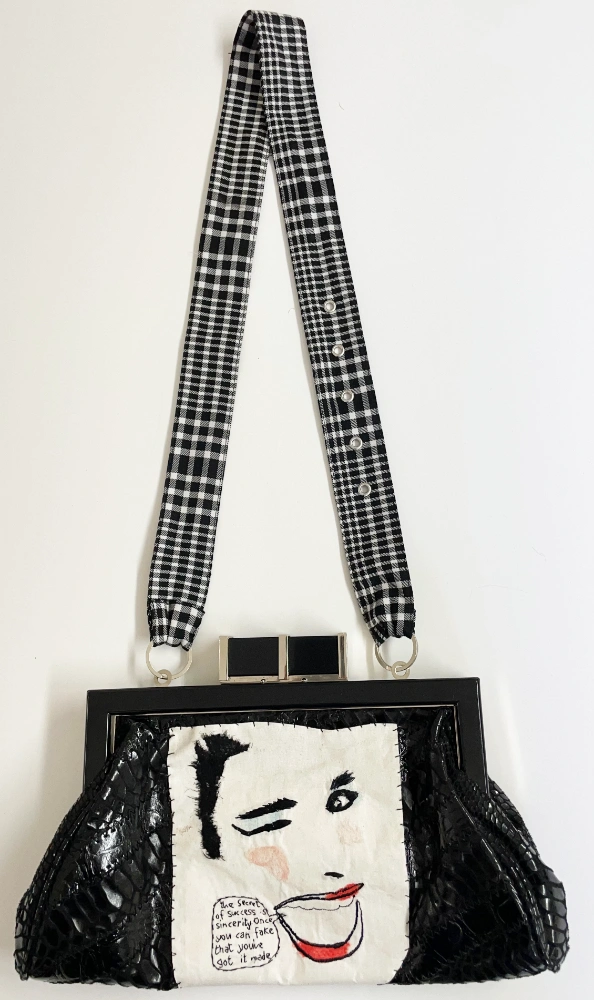
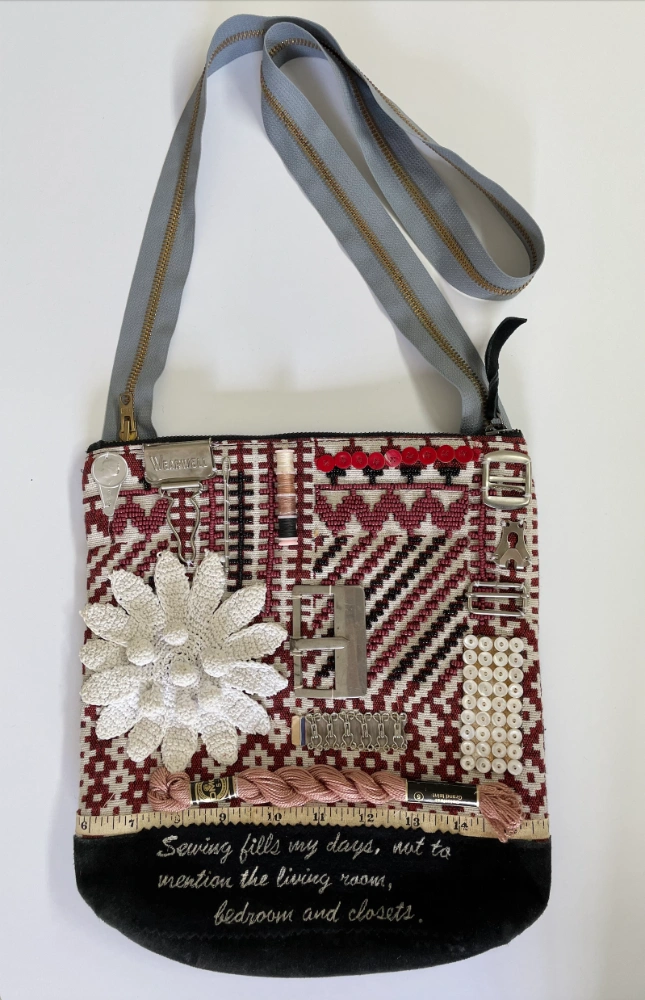
What artists inspire you personally – who would you like to sit next to at a dinner party?
I’m inspired by too many artists to count, in all genres. Painters and sculptors obviously but designers of other things too.
One of the problems with textiles I often find is we are too involved in techniques and process. Maybe feeling that the longer something takes the better it is. So, to go and see the work of a painter like Picasso or Cy Twombly and see that by one sweep of a brush stroke you can make something visually stunning is life changing.
I’d like to ask one of the great painters or someone like Alexander McQueen over for dinner. I’d ask what they would do with my ‘marks’ as I’d love to be bolder.
What’s next for you? What do you have coming up?
My husband is a collage artist and we’ve had studios next to each other in our home for the last 29 years. At the end of October 2024 we have our first joint show in the Air Contemporary Gallery in Ham Yard London.
I have also started a new book. It’s provisionally called ‘Curating with Colour’ and would be a look into my archives which are vast…
Discover more by visiting her website or follow her on Instagram.
Key Takeaways
Here are the key takeaways from the interview with Karen Nicol:
Versatile Techniques, Unique Expression
Karen’s work is driven by a commitment to finding the right technique and material for each piece, blending traditional methods with unconventional materials—from photograph negatives to vintage yarns—to achieve rich, sensory textures.
The Power of the Irish Machine
Karen’s artistry heavily relies on her vintage Irish embroidery machine, which allows her to “draw” with the needle, giving her work a fluid, painterly quality that is distinctively her own.
Creative Roots and Early Influences
Growing up in a family of embroiderers, Karen developed a love for textile arts from a young age. This foundation, combined with formal art training, fostered her signature style that balances technical skill with artistic exploration.
Finding Inspiration Everywhere
Karen’s inspiration comes from everyday visuals, from garden gates to museum exhibits. Her studio, filled with collected objects from flea markets, serves as a living “mood board,” constantly fueling her creativity.
Flexibility and Lifelong Learning
Karen’s advice to aspiring textile artists highlights the importance of flexibility—embracing diverse projects across fashion, interiors, and fine art keeps her work fresh, challenges her creativity, and opens new doors in her career.


